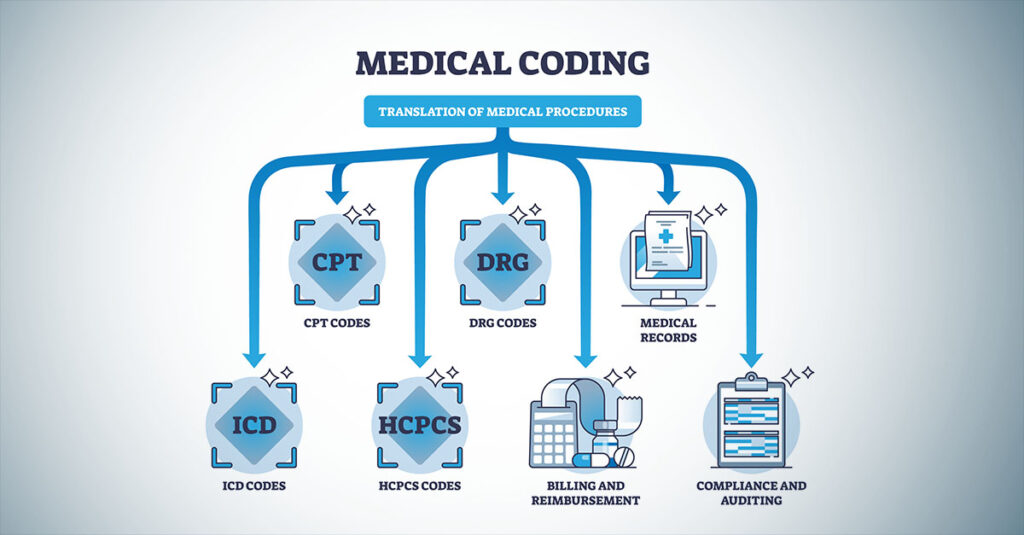When examining VA nexus letter examples, patterns emerge in how qualified healthcare providers structure medical opinions for service connection claims. These examples reveal the components, language, and medical rationale that distinguish comprehensive medical opinions from basic statements. VA nexus letter examples vary by medical condition and provider, yet effective examples consistently address the same evidentiary question: whether medical evidence supports a connection between a current condition and military service. Understanding these patterns helps illustrate what comprehensive nexus letters include and how they align with VA evidentiary standards. This guide examines VA nexus letter examples across different conditions and explains how Claim Climbers coordinates access to qualified providers who prepare these medical opinions for veterans.
Understanding how medical evidence is evaluated clarifies why comprehensive documentation matters in VA disability reviews.
Table of Contents
- Key Components in VA Nexus Letter Examples
- Common Formats and Structures in Nexus Letters
- Medical Opinion Language in Nexus Letter Examples
- Condition-Specific Nexus Letter Examples
- What Distinguishes Strong Nexus Letter Examples
- Where Nexus Letters Are Coordinated (Partner)
- Frequently Asked Questions About Nexus Letter Examples
TL;DR – Quick Summary
- VA nexus letter examples show how qualified providers document medical opinions on service connection with detailed clinical rationale.
- Effective examples include provider qualifications, comprehensive record review, clinical findings, medical analysis, and clear opinions
- The “at least as likely as not” standard appears consistently in nexus letter examples, representing the 50%+ probability the VA requires
- Strong examples provide detailed medical reasoning rather than conclusory statements
- Claim Climbers coordinates nexus letter services by connecting veterans with qualified healthcare providers who prepare independent medical opinions.
- REE Medical coordinates DBQ services that document current condition severity (a separate type of medical documentation)
- Examples demonstrate medical opinion formats but each veteran’s nexus letter is individualized based on their specific medical history
Key Components in VA Nexus Letter Examples
When reviewing VA nexus letter examples across different medical conditions, several essential components consistently appear in comprehensive medical opinions:
Provider Qualifications and Credentials
VA nexus letter examples typically begin with a clear statement of the medical provider’s qualifications. According to VA guidance on medical evidence, the VA considers the provider’s credentials when evaluating medical opinions.
- Nexus letter examples typically include:
- The provider’s medical degree and specialty board certifications
- Years of clinical experience in the relevant medical field
- Specific expertise related to the condition being evaluated
- Licensure information and current practice details
Documentation of Record Review
Strong VA nexus letter examples demonstrate that the provider thoroughly reviewed relevant medical documentation before forming an opinion. This typically includes:
- Complete service treatment records (STRs)
- Post-service medical records from VA and private providers
- Diagnostic imaging results and laboratory findings
- Previous C&P examination reports
- Any prior medical opinions or evaluations
The nexus letter documents which records were reviewed and when, establishing that the opinion is based on comprehensive information rather than limited data.
Clinical Examination Findings
Many VA nexus letter examples include findings from a clinical examination. When providers examine the veteran, the nexus letter documents:
- Current symptoms and their frequency
- Physical examination findings
- Functional limitations observed
- Comparison between documented history and current presentation
Some nexus letter examples are based solely on record review without examination, which the VA also considers valid when the provider has sufficient documentation to form an opinion.

Medical Analysis and Rationale
The most critical component in VA nexus letter examples is the medical analysis section. This is where the provider explains the clinical reasoning connecting the current condition to military service.
- Effective medical analysis in nexus letter examples:
- Explains the medical mechanism by which service events caused the current condition
- Cites relevant medical literature or studies when applicable
- Addresses alternative explanations and why they are less probable
- Discusses the natural progression of the condition from service to present
- Explains why the connection meets the “at least as likely as not” standard
Clear Medical Opinion Statement
VA nexus letter examples consistently include an explicit opinion statement addressing whether the current condition is related to military service. The opinion typically uses specific language that aligns with VA evidentiary standards.

Common Formats and Structures in Nexus Letters
While VA nexus letter examples vary by provider and condition, most follow similar organizational structures:
Standard Nexus Letter Format
Introduction Section
- Provider identification and qualifications
- Purpose of the evaluation
- Date of examination or record review
- Summary of records reviewed
Background Section
- Veteran’s service history relevant to the claim
- In-service events, injuries, or exposures documented in service records
- Post-service medical history
- Current diagnosis and treatment
Clinical Findings Section (when applicable)
- Examination methodology
- Objective findings
- Symptom documentation
- Functional assessment
Medical Opinion Section
- Analysis of the connection between service and current condition
- Discussion of medical literature or research
- Explanation of causal relationship
- Consideration of alternative causes
Conclusion Section
- Clear statement of opinion regarding service connection
- Degree of medical certainty
- Signature and credentials
Specialized Format Variations
Some VA nexus letter examples use formats tailored to specific claim types:
Secondary Service Connection Nexus Letters focus on how an already service-connected condition caused or aggravated another condition. Understanding secondary service connection can be critical for veterans with multiple interconnected conditions.
Aggravation Nexus Letters address whether military service permanently worsened a pre-existing condition beyond its natural progression.
Direct Service Connection Nexus Letters establish that a condition originated during military service and continues to affect the veteran.

Medical Opinion Language in Nexus Letter Examples
The specific language used in VA nexus letter examples is significant because the VA evaluates medical opinions based on how clearly they address evidentiary standards.
“At Least As Likely As Not” Standard
Under 38 U.S.C. § 5107, when evidence is in relative equipoise (approximately equal), the VA resolves doubt in favor of the veteran. In practice, providers often use ‘at least as likely as not’ (≈50% probability or greater) language when addressing the evidentiary standard.
VA nexus letter examples commonly include phrases such as:
- “It is at least as likely as not that the veteran’s [condition] is related to military service”
- “To a reasonable degree of medical certainty, it is more likely than not that [condition] was caused by service”
- “There is a probability of 50% or greater that [condition] is connected to the documented service event”
Degrees of Medical Certainty
Nexus letter examples demonstrate different levels of medical certainty:
Strong Positive Opinions use language such as:
- “It is my opinion with a high degree of medical certainty…”
- “The medical evidence clearly establishes…”
- “It is more likely than not…”
Qualified Opinions may include:
- “Based on the available evidence, it is at least as likely as not…”
- “While some uncertainty exists, the preponderance of evidence suggests…”
Negative Opinions that do not support service connection typically state:
- “It is less likely than not that [condition] is related to service”
- “The medical evidence does not support a connection…”
The VA considers properly formatted medical opinions regardless of whether they support or oppose service connection.

Condition-Specific Nexus Letter Examples
VA nexus letter examples vary significantly depending on the medical condition being evaluated. Here are common patterns for different condition categories:
Musculoskeletal Condition Nexus Letters
Nexus letters for conditions like knee injuries, back problems, or shoulder damage often include:
- Biomechanical analysis of how documented service events caused current condition
- Discussion of progressive deterioration from initial injury
- Imaging review showing structural damage consistent with service trauma
- Explanation of why current limitations result from service-connected damage
Example focus: “The veteran’s documented fall from a vehicle during deployment resulted in acute knee trauma. Subsequent MRI findings showing meniscal tears and cartilage degradation are consistent with the biomechanical forces involved in the documented incident. The progressive arthritis now present represents the natural sequelae of the initial service-connected trauma.”

Mental Health Condition Nexus Letters
Nexus letters for PTSD, depression, anxiety, or other mental health conditions typically address:
- Documented stressors or traumatic events during service
- Timeline showing symptom onset during or shortly after service
- Diagnostic criteria met for the current condition
- Relationship between service experiences and current symptomatology
These nexus letters often reference the VA’s PTSD evaluation criteria under 38 CFR § 4.130 and explain how documented service events meet the stressor criteria.

Respiratory and Exposure-Related Condition Nexus Letters
For conditions related to toxic exposures, burn pits, or environmental hazards, nexus letter examples typically include:
- Documentation of the veteran’s presence in areas with known exposures
- Medical literature linking the exposure to the diagnosed condition
- Timeline showing symptom onset following exposure period
- Explanation of latency periods when applicable
Veterans exposed to burn pits or other hazards may benefit from nexus letters that reference the PACT Act provisions and presumptive service connection criteria.
For exposure-related conditions, some medical opinions reference PACT Act provisions and presumptive frameworks when clinically relevant.
Secondary Condition Nexus Letters
When one service-connected condition causes another, nexus letter examples focus on:
- The established service-connected primary condition
- Medical explanation of how the primary condition caused the secondary condition
- Timeline showing development of secondary condition after primary condition
- Elimination of other potential causes
For example, a service-connected knee injury causing compensatory gait abnormalities that lead to lower back problems. Learn more about DBQs (used to document current severity) through REE Medical’s coordination services.
What Distinguishes Strong Nexus Letter Examples
When examining various VA nexus letter examples, several factors distinguish high-quality medical opinions from weaker ones:
Detailed Medical Rationale vs. Conclusory Statements
Strong nexus letter examples provide extensive medical reasoning explaining the connection to service. Weak examples simply state a conclusion without supporting analysis.
Strong Example Pattern: “The veteran’s current lumbar radiculopathy is connected to the documented parachute landing injury in 2008 through the following medical mechanism: The acute L4-L5 disc herniation documented three weeks post-injury initiated a cascade of degenerative changes. Serial imaging from 2008 to present demonstrates progressive disc space narrowing, osteophyte formation, and foraminal stenosis at the affected level. This progressive deterioration follows the well-established natural history of post-traumatic disc injury as documented in peer-reviewed orthopedic literature [citation]. Alternative causes such as age-related degeneration are less likely given the acute traumatic onset and the localization of degenerative changes to the specifically injured level.”
Weak Example Pattern: “In my opinion, the veteran’s back condition is related to military service.”
The strong example provides medical mechanism, references objective findings, cites literature, and addresses alternative explanations. The weak example offers no supporting rationale.
Specialist Credentials and Relevant Experience
According to VA evaluation practices, opinions from specialists in the relevant medical field typically receive more weight than opinions from general practitioners when the condition requires specialized knowledge.
Effective nexus letter examples highlight provider qualifications relevant to the specific condition being evaluated.
Comprehensive Record Review
Strong VA nexus letter examples demonstrate thorough review of all relevant medical evidence. The letter documents which specific records were reviewed and references key findings from those records throughout the analysis.
Proper Citation of Medical Literature
When applicable, effective nexus letter examples cite relevant medical studies, research, or clinical guidelines that support the medical opinion. This demonstrates the opinion is based on established medical knowledge rather than speculation.
Address Conflicting Evidence
The strongest nexus letter examples acknowledge any evidence that might seem contradictory and explain why, despite such evidence, the opinion supporting service connection remains valid.

How Claim Climbers Coordinates Nexus Letter Services
Claim Climbers specializes in coordinating nexus letter services by connecting veterans with independent, licensed providers who prepare medical opinions for VA disability evaluations. As REE Medical’s exclusive partner for nexus evaluations, Claim Climbers has developed a network of qualified healthcare providers who prepare comprehensive medical opinions addressing service connection.
What Claim Climbers Provides
Claim Climbers coordinates connections between veterans and licensed healthcare providers who:
- Hold appropriate medical licenses and specialty certifications
- Have experience preparing nexus letters for VA disability evaluations
- Understand VA evidentiary standards and medical opinion requirements
- Conduct thorough record reviews before forming medical opinions
- Provide detailed medical rationale in their nexus letters
The Claim Climbers Process
In Claim Climbers’ service model, the organization coordinates the nexus letter process by:
- Initial Consultation: Claim Climbers discusses the veteran’s case details, reviews what medical records are available, and explains the nexus letter coordination process.
- Provider Matching: Claim Climbers connects the veteran with a qualified healthcare provider whose specialty aligns with the condition being evaluated.
- Record Review: The healthcare provider reviews the veteran’s service treatment records, post-service medical documentation, and other relevant evidence.
- Medical Opinion Preparation: The provider prepares a comprehensive nexus letter based on their clinical analysis of the medical evidence and the connection to military service.
- Delivery: Claim Climbers coordinates delivery of the completed nexus letter to the veteran.
Veterans can learn more about Claim Climbers’ nexus letter coordination services at ClaimClimbers.com. Claim Climbers provides information about the process, timelines, and costs associated with obtaining nexus letters from qualified providers.
The REE Medical and Claim Climbers Partnership
The partnership between REE Medical and Claim Climbers addresses the two distinct types of medical documentation veterans often need:
Claim Climbers coordinates nexus letter services that address whether a condition is related to military service (service-connection medical opinions).
REE Medical coordinates DBQ (Disability Benefits Questionnaire) services that document the current severity and functional impact of conditions—addressing how severe the condition is for rating purposes.
Learn more about REE Medical’s DBQ coordination services or schedule a complimentary consultation to understand how DBQs complement nexus letters within the VA’s evaluation process.
Through this partnership, veterans can access both types of medical documentation: nexus letters coordinated by Claim Climbers (service-connection opinions) and DBQs coordinated by REE Medical (current-severity documentation).

Frequently Asked Questions About Nexus Letter Examples
Are VA nexus letter examples templates that can be filled in?
Nexus letters are individualized medical opinions based on a specific veteran’s unique medical history, service records, and current condition. Each nexus letter is prepared by a qualified healthcare provider who reviews the veteran’s complete medical documentation and forms an independent medical opinion.
While VA nexus letter examples demonstrate what components comprehensive medical opinions include, these examples serve educational purposes only. Each nexus letter reflects genuine clinical analysis specific to that veteran’s situation based on the provider’s review of their medical records.
What is the difference between a nexus letter and a DBQ?
According to VA documentation standards, these serve different evidentiary purposes:
Nexus letters provide medical opinions on whether a condition is related to military service (service connection). Claim Climbers coordinates nexus letter services with qualified providers.
DBQs document the current severity and functional impact of a condition—supporting accurate disability ratings. REE Medical coordinates DBQ services with independent healthcare providers.
The two types of documentation serve complementary purposes: a nexus letter to establish the connection to service, and a DBQ to document the condition’s current severity for rating purposes.
How detailed are nexus letters in typical examples?
The level of detail in VA nexus letter examples varies based on case complexity. Simple, straightforward cases may involve less extensive explanation, while complex cases involving multiple medical factors typically include detailed analysis.
Generally, VA nexus letter examples that provide clear medical rationale supporting the opinion demonstrate more comprehensive analysis than brief, conclusory statements. The medical analysis section typically represents the most substantial portion of comprehensive nexus letter examples.
Can a nexus letter be too long?
While thoroughness is valuable, effective VA nexus letter examples balance comprehensive analysis with clear communication. The VA reviews and evaluates the medical opinion based on how clearly it addresses the evidentiary question.
Effective nexus letter examples:
- Include all necessary components and analysis
- Organize information logically
- Avoid excessive repetition
- Focus on relevant medical factors
- Present conclusions clearly
Extremely lengthy nexus letters that include tangential information may be less effective than focused letters that address the specific evidentiary question at hand.
What happens if a nexus letter contains conflicting information?
The VA evaluates all evidence in the claim file. When nexus letters contain internal inconsistencies or conflict with other medical evidence, the VA weighs all evidence according to regulatory standards.
Strong VA nexus letter examples avoid internal contradictions by:
- Ensuring all statements are consistent throughout the letter
- Addressing apparent conflicts in the medical record
- Explaining why certain evidence is more or less reliable
- Providing clear reasoning for the final opinion despite any conflicting data
Can veterans request nexus letters from their regular doctors?
Veterans can request nexus letters from any qualified, licensed healthcare provider. However, several factors affect the outcome:
Many treating physicians:
- May be unfamiliar with VA evidentiary standards and nexus letter requirements
- May not have time to conduct the thorough record review involved
- May be uncomfortable providing opinions about causation outside their direct treatment experience
- May not have access to service medical records
Providers who specialize in VA disability evaluations and regularly prepare nexus letters typically understand the specific documentation requirements reflected in effective VA nexus letter examples. Claim Climbers coordinates access to such specialized providers who focus on nexus letter preparation.
How long are nexus letters considered current?
The VA does not set specific expiration dates for medical evidence. However, the relevance of a nexus letter may change over time, particularly if:
- The veteran’s condition has significantly changed since the opinion was written
- New medical evidence has emerged
- Substantial time has passed since the evaluation
Recent nexus letters generally align more closely with current medical evidence, though well-reasoned medical opinions explaining service connection remain relevant when the underlying facts have not changed.
What if a nexus letter does not support service connection?
Veterans are not required to submit medical evidence that does not support their claims. When a provider forms an opinion that a condition is not service-connected, veterans can:
- Seek evaluation from another qualified provider
- Provide additional medical records the first provider may not have reviewed
- Contact Claim Climbers to discuss obtaining comprehensive evaluations from specialists in the relevant field
The VA evaluates all evidence submitted, so veterans typically submit medical opinions that support service connection.
Do nexus letters guarantee claim approval?
No medical documentation can guarantee VA outcomes. The Department of Veterans Affairs is the only entity that makes final determinations regarding service connection and disability ratings.
Nexus letters provide medical evidence for the VA to consider during its evaluation. The quality, thoroughness, and credibility of a nexus letter can influence the strength of a claim’s medical evidence, but the VA makes independent determinations based on its review of all evidence and applicable regulations.
Claim Climbers coordinates nexus letter services with qualified providers; neither Claim Climbers nor any medical provider can control VA rating decisions.
How much do nexus letters typically cost?
Costs for nexus letters vary based on several factors:
- The complexity of the medical condition and case
- The extent of record review required
- Whether the provider conducts an in-person examination
- The provider’s credentials and experience
- Geographic location and market factors
Veterans interested in obtaining nexus letters can contact Claim Climbers directly to discuss pricing for their specific situation. Claim Climbers provides transparent pricing information and explains what services are included in nexus letter coordination.
How does Claim Climbers select providers for nexus letter preparation?
Claim Climbers maintains a network of licensed healthcare providers who specialize in preparing medical opinions for VA disability claims. The organization matches veterans with providers whose medical specialty and experience align with the condition being evaluated.
Providers in the Claim Climbers network are selected based on:
- Appropriate medical licenses and specialty certifications
- Experience with VA disability evaluations and nexus letter preparation
- Understanding of VA evidentiary standards
- Track record of preparing thorough, well-reasoned medical opinions
- Ability to conduct comprehensive record reviews
Veterans can contact Claim Climbers at ClaimClimbers.com to learn more about the provider network and how providers are matched to specific cases.
Bottom Line
Examining VA nexus letter examples reveals consistent patterns in how comprehensive medical opinions establish service connection. Strong nexus letter examples include provider qualifications, comprehensive record review, clinical findings, detailed medical rationale, and clear opinion statements using appropriate evidentiary language.
Claim Climbers coordinates nexus letter services by connecting veterans with qualified healthcare providers who prepare medical opinions for VA disability evaluations. Veterans can learn more about obtaining nexus letters at ClaimClimbers.com.
REE Medical coordinates DBQ services for documenting current condition severity—a separate but complementary type of medical documentation. Learn more about REE Medical’s DBQ coordination services or schedule a complimentary consultation.
Together, these resources provide veterans with access to comprehensive medical documentation addressing both service connection (nexus letters through Claim Climbers) and condition severity (DBQs through REE Medical).

